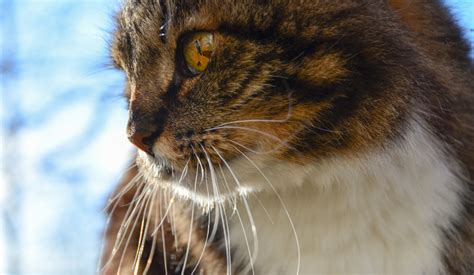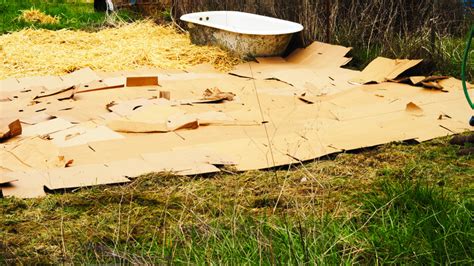
Norwegian Forest Cats, known for their robust builds and thick double coats evolved to withstand harsh Scandinavian climates, are gaining popularity as affectionate and communicative companions, often exhibiting a unique range of vocalizations beyond the typical meow, including chirps and playful chatters.
These semi-longhaired felines, also referred to as “Wegies,” are characterized by their intelligence, adaptability, and social nature, making them well-suited for families and individuals seeking a playful yet independent pet. Their history traces back centuries, with possible Viking connections, and their natural survival skills have shaped them into hardy and resilient creatures.
The Norwegian Forest Cat is distinguished by its triangular head, almond-shaped eyes, long, bushy tail, and water-resistant double coat, which is essential for insulation against cold weather. The breed standard calls for a cat that is muscular and substantial, giving an impression of power and agility. Males are typically larger than females. Colors and patterns vary widely, except for colorpoint, chocolate, and lilac.
Their vocalizations are diverse. “They have a variety of vocalizations from chirps to trills to meows,” says Teresa Keiger, a judge with The Cat Fanciers’ Association (CFA). This communicative nature endears them to owners who appreciate a cat that interacts vocally.
Beyond their vocal abilities, Norwegian Forest Cats are known for their playful and curious personalities. They enjoy climbing and exploring, traits that reflect their arboreal ancestry. They are intelligent cats that can be trained to perform tricks and enjoy interactive play with their owners. Despite their independence, they are generally affectionate and enjoy being around people.
Origins and History
The Norwegian Forest Cat’s history is deeply entwined with the folklore and natural environment of Norway. According to popular belief, these cats are descendants of wild cats that adapted to the Scandinavian climate over centuries. Some theories even link them to cats brought to Norway by Vikings, possibly from Turkey or other parts of Europe. The dense, water-resistant coat that is hallmark of the breed is a testament to the adaptation to harsh conditions.
The breed was formally recognized in Norway in the 1930s, but World War II disrupted breeding programs. Interest in the breed was renewed in the 1970s, leading to its recognition by European cat fancier organizations. The Cat Fanciers’ Association (CFA) granted the Norwegian Forest Cat full recognition in 1993, further solidifying its popularity worldwide.
Their initial role was primarily as working cats, valued for their ability to control rodent populations on farms and in homes. This practical purpose contributed to their robust physique and hunting skills. Over time, their appealing temperament and striking appearance led to their adoption as companion animals.
Physical Characteristics
The Norwegian Forest Cat is a large, muscular cat with a distinctive appearance. Key physical characteristics include:
- Size: Males typically weigh between 13 and 22 pounds, while females range from 8 to 18 pounds.
- Coat: The double coat consists of a dense, woolly undercoat and a long, glossy outercoat. This provides excellent insulation against cold and wet conditions. The coat is semi-longhaired and requires regular grooming to prevent matting.
- Head: The head is triangular in shape, with a strong chin and a straight profile. The ears are medium to large, with tufts of fur at the tips (lynx tips).
- Eyes: The eyes are almond-shaped and can be any color, with no specific correlation to coat color.
- Tail: The tail is long, bushy, and reaches at least to the cat’s shoulder blades.
- Legs and Paws: The legs are sturdy and muscular, with large, round paws. Tufts of fur between the toes help provide traction on snow and ice.
The water-resistant quality of their coat is due to the oily nature of the outer guard hairs. This adaptation allows them to stay dry and warm in wet conditions. The double coat also sheds seasonally, with a heavier shedding period in the spring.
Temperament and Behavior
Norwegian Forest Cats are known for their balanced temperament, combining playfulness with independence. They are generally friendly and affectionate towards their families, but they are not overly demanding of attention. They enjoy being around people but are also content to entertain themselves.
Key aspects of their temperament include:
- Playfulness: Wegies are active and playful cats that enjoy climbing, exploring, and playing with toys. They have a natural hunting instinct, which they often express through play.
- Intelligence: They are intelligent and trainable cats. They can learn tricks and commands with positive reinforcement.
- Socialization: They are generally good with children and other pets, including dogs, especially if they are raised together. Early socialization is important to ensure they are comfortable in different environments and around different people and animals.
- Independence: While they enjoy human companionship, they are not overly needy. They are content to spend time alone and are not prone to separation anxiety.
- Vocalizations: As highlighted in the news article, Norwegian Forest Cats are known for their diverse vocalizations, which include chirps, trills, and meows. They use these vocalizations to communicate with their owners and express their needs and emotions.
Their climbing abilities are noteworthy. They are skilled climbers and enjoy perching in high places. Providing them with cat trees or other climbing structures can help satisfy this natural instinct.
Care and Maintenance
Caring for a Norwegian Forest Cat involves regular grooming, a balanced diet, and routine veterinary care. Key aspects of their care include:
- Grooming: The double coat requires regular grooming to prevent matting and tangles. Brushing several times a week is recommended, with daily brushing during shedding season. Occasional bathing may also be necessary.
- Diet: A high-quality diet that is appropriate for their age and activity level is essential. They should have access to fresh water at all times. Due to their larger size, they may require more food than some other breeds.
- Exercise: They need regular exercise to stay healthy and prevent obesity. Providing them with toys, climbing structures, and opportunities for play can help them stay active.
- Veterinary Care: Regular veterinary checkups are important to ensure they are healthy and up-to-date on vaccinations and parasite prevention. They are generally a healthy breed, but they can be prone to certain genetic conditions.
Specific health concerns to be aware of include hypertrophic cardiomyopathy (HCM), a heart condition, and hip dysplasia. Responsible breeders screen their cats for these conditions to reduce the risk of transmission to offspring. Glycogen storage disease IV is a rare but serious genetic disorder that can affect Norwegian Forest Cats. Genetic testing can identify carriers of this disease.
Norwegian Forest Cats and Families
Norwegian Forest Cats are well-suited to family life due to their friendly and adaptable nature. They typically get along well with children and other pets, making them a good choice for multi-pet households.
Factors to consider when introducing a Norwegian Forest Cat to a family include:
- Children: They are generally tolerant of children, but it is important to teach children how to interact with them respectfully. Supervise interactions between young children and cats to ensure the cat is not overwhelmed.
- Other Pets: They can coexist peacefully with other cats and dogs, especially if they are introduced gradually. Early socialization is key to establishing positive relationships.
- Environment: Providing them with a stimulating environment with plenty of toys, climbing structures, and scratching posts can help prevent boredom and destructive behavior.
Their playful nature makes them engaging companions for children, and their independent streak means they are less likely to become stressed by the activity of a busy household.
Breed Standards and Recognition
The Norwegian Forest Cat is recognized by several major cat fancier organizations, including The Cat Fanciers’ Association (CFA), the International Cat Association (TICA), and the Fédération Internationale Féline (FIFe). Each organization has its own breed standard, which outlines the ideal characteristics of the breed.
Key elements of the breed standard include:
- General Appearance: A large, muscular cat with a long, flowing coat and a distinctive triangular head.
- Head: Triangular in shape, with a strong chin and a straight profile.
- Ears: Medium to large, with tufts of fur at the tips (lynx tips).
- Eyes: Almond-shaped and can be any color.
- Body: Long and muscular, with a deep chest.
- Coat: Double coat with a dense, woolly undercoat and a long, glossy outercoat.
- Tail: Long, bushy, and reaches at least to the cat’s shoulder blades.
- Legs and Paws: Sturdy and muscular legs with large, round paws.
Breed standards are used by judges at cat shows to evaluate the quality of individual cats. Cats that closely match the breed standard are considered to be of higher quality and are more likely to win awards.
Finding a Norwegian Forest Cat
If you are interested in acquiring a Norwegian Forest Cat, there are several options to consider:
- Breeders: Purchasing a cat from a reputable breeder is the most reliable way to ensure you are getting a healthy and well-socialized cat. Reputable breeders will screen their cats for genetic health conditions and provide a health guarantee.
- Rescues and Shelters: While Norwegian Forest Cats are not as common in shelters as some other breeds, it is still possible to find one at a rescue organization. Check with local cat rescues and shelters to see if they have any Norwegian Forest Cats or similar breeds available for adoption.
- Online Marketplaces: Be cautious when purchasing a cat from an online marketplace, as it can be difficult to verify the health and background of the cat. Always meet the cat in person before committing to a purchase.
When choosing a breeder, ask about their breeding practices, health screening protocols, and socialization methods. A good breeder will be knowledgeable about the breed and happy to answer your questions.
The Appeal of the Norwegian Forest Cat
The Norwegian Forest Cat’s appeal lies in its unique combination of striking appearance, playful personality, and adaptable nature. They are beautiful cats with a rugged charm, and their friendly and intelligent personalities make them wonderful companions.
Reasons for their popularity include:
- Appearance: Their long, flowing coat and distinctive facial features make them visually appealing.
- Personality: Their playful and affectionate nature makes them enjoyable to be around.
- Adaptability: They are adaptable to different living environments and can thrive in both apartments and houses.
- Health: They are generally a healthy breed with a long lifespan.
- Vocalizations: Their unique vocalizations add to their charm and make them engaging companions.
The breed’s increasing popularity is a testament to its many positive qualities. As more people discover the joys of owning a Norwegian Forest Cat, their popularity is likely to continue to grow.
Comparison with Other Breeds
The Norwegian Forest Cat is often compared to other longhaired breeds, such as the Maine Coon and the Siberian. While these breeds share some similarities, there are also key differences.
- Maine Coon: Maine Coons are larger than Norwegian Forest Cats and have a more rectangular head shape. Maine Coons also tend to be more outgoing and vocal.
- Siberian: Siberians are similar in size to Norwegian Forest Cats and have a slightly rounder head shape. Siberians are known for being hypoallergenic, while Norwegian Forest Cats are not.
Despite these differences, all three breeds are known for their friendly personalities and adaptability. The choice of which breed to acquire depends on individual preferences and lifestyle.
Conclusion
The Norwegian Forest Cat is a captivating breed that combines beauty, intelligence, and a playful spirit. Their unique vocalizations, robust health, and adaptable nature make them ideal companions for families and individuals seeking a loyal and engaging pet. From their possible Viking origins to their modern-day popularity, the Norwegian Forest Cat continues to enchant cat lovers around the world. Their distinct chirps and playful chatters are just one aspect of their charming character, making them a cherished addition to any home.
Frequently Asked Questions (FAQ)
-
What are the typical vocalizations of a Norwegian Forest Cat besides meowing?
Norwegian Forest Cats are known for their diverse vocalizations, including chirps, trills, and playful chatters, which they use to communicate with their owners and express their needs. According to Teresa Keiger, a judge with The Cat Fanciers’ Association (CFA), “They have a variety of vocalizations from chirps to trills to meows.”
-
How much grooming does a Norwegian Forest Cat require due to its thick double coat?
The double coat of a Norwegian Forest Cat requires regular grooming to prevent matting and tangles. Brushing several times a week is recommended, with daily brushing during shedding season. Occasional bathing may also be necessary to maintain coat health.
-
What are some common health issues that Norwegian Forest Cats are prone to?
While generally a healthy breed, Norwegian Forest Cats can be prone to hypertrophic cardiomyopathy (HCM), a heart condition, and hip dysplasia. Responsible breeders screen their cats for these conditions. Glycogen storage disease IV is a rare but serious genetic disorder that can affect the breed as well, and genetic testing can identify carriers.
-
Are Norwegian Forest Cats good with children and other pets?
Yes, Norwegian Forest Cats are generally good with children and other pets, including dogs, especially if they are raised together. Early socialization is important to ensure they are comfortable in different environments and around different people and animals.
-
What is the origin of the Norwegian Forest Cat, and how did it adapt to its environment?
The Norwegian Forest Cat’s history is deeply entwined with the folklore and natural environment of Norway. They are believed to be descendants of wild cats that adapted to the Scandinavian climate over centuries. Some theories link them to cats brought to Norway by Vikings. Their dense, water-resistant coat is a testament to their adaptation to harsh conditions, allowing them to thrive in cold, wet climates.









